MATTERS OF OBSESSION
May-Eliane Miailhe — an enriching journey of class through glass
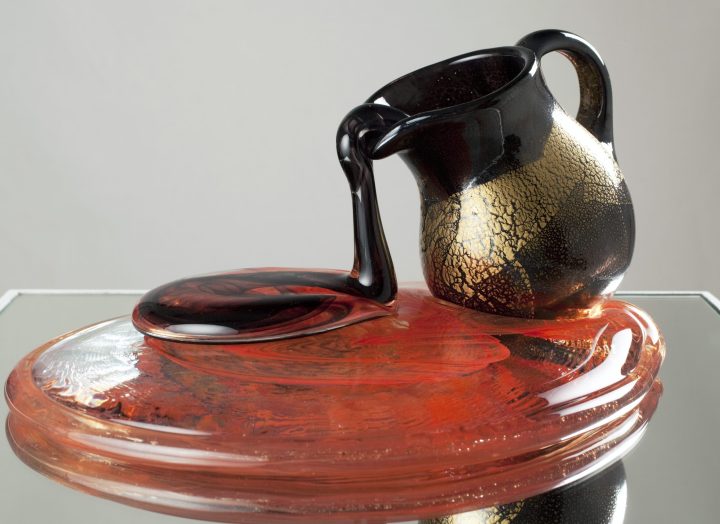
Imagine, as a very young child, wandering through your grandparents’ home in the heart of Bordeaux, France, and seeing artworks so beautiful that your heart stops for a moment. The pieces — the way they are formed, the colours, their quiet impact — captivate you, and from then on they irresistibly shape the direction of your life.
Some 85 years ago, French-born May-Eliane Miailhe first experienced the arresting power of art. Her grandfather, a collector of paintings, ancient Chinese ceramics and pre-Columbian art, would guide her through his house (“It was like a museum”) and tell her about the history of each piece, where it came from and when and how it was made. It’s no surprise that her journey in art appreciation and collecting began then and there.
Later, as a student at the École des Arts Décoratifs (now EnsAD), she specialised in the art of ancient civilisations, particularly the Middle East, Mesopotamia and Egypt.
Her interest in glass, however, was sparked on a visit to Bath in the UK, where her attention was caught by a small glass goblet, notable for its cleverly twisted stem, in the window of an antique shop.
What she discovered through her further research into the ancient art of glass-making astonished her: all glass starts off as nothing more than sand, a very poor material that is readily found “on beaches and deserts”. But, when combined with the intelligence, creativity and skill of man, it can be fashioned into something very different and richly superior.
Much like wine-making, then?
“Glass and wine do have a lot in common,” she says. “They both come from poor material and poor soils, and through man’s talent and genius they become works of art.”
And May-Eliane (now Mme de Lencquesaing) certainly knows about wine: in 1978, she became owner and general manager of the prestigious Chateau Pichon Comtesse de Lalande, expanding its size as well as the reputation and quality of its wines.
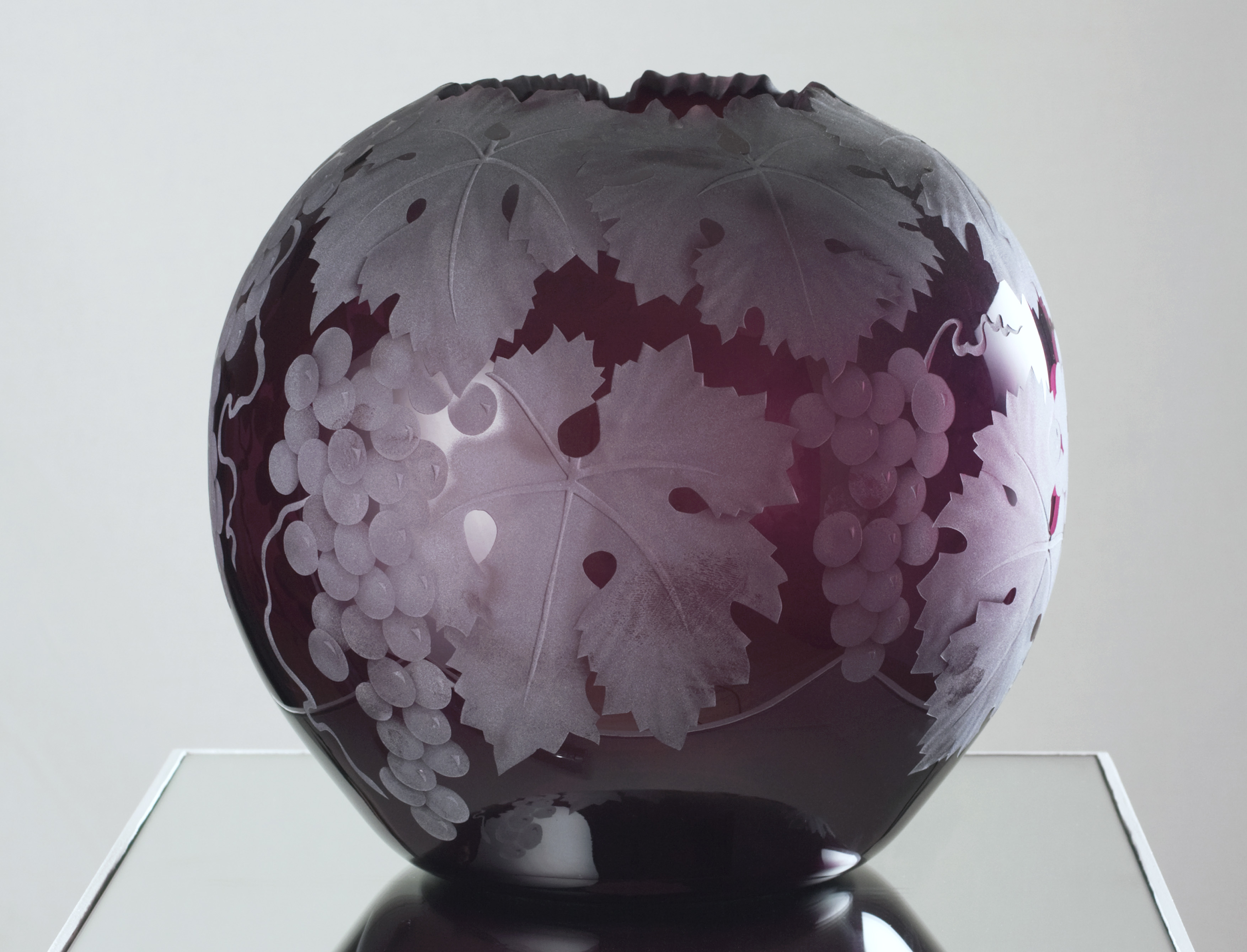
Purple Cabernet grape bowl – Cynthia Myers, USA (1990). Image: Glenelly Glass Museum / Supplied
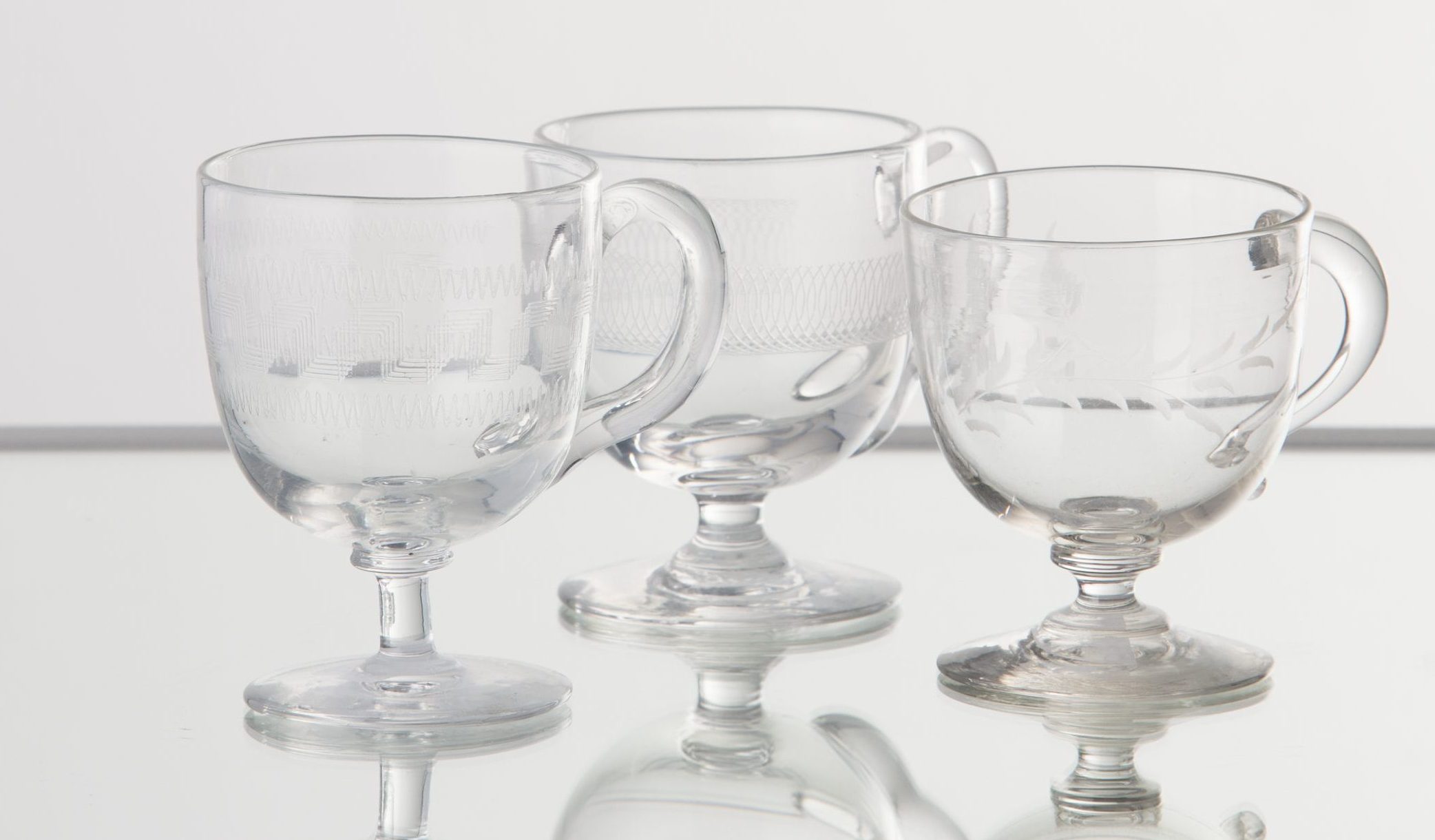
Jelly glasses – Woodstock Glass, Cape Town (1879-1886). Image: Glenelly Glass Museum / Supplied
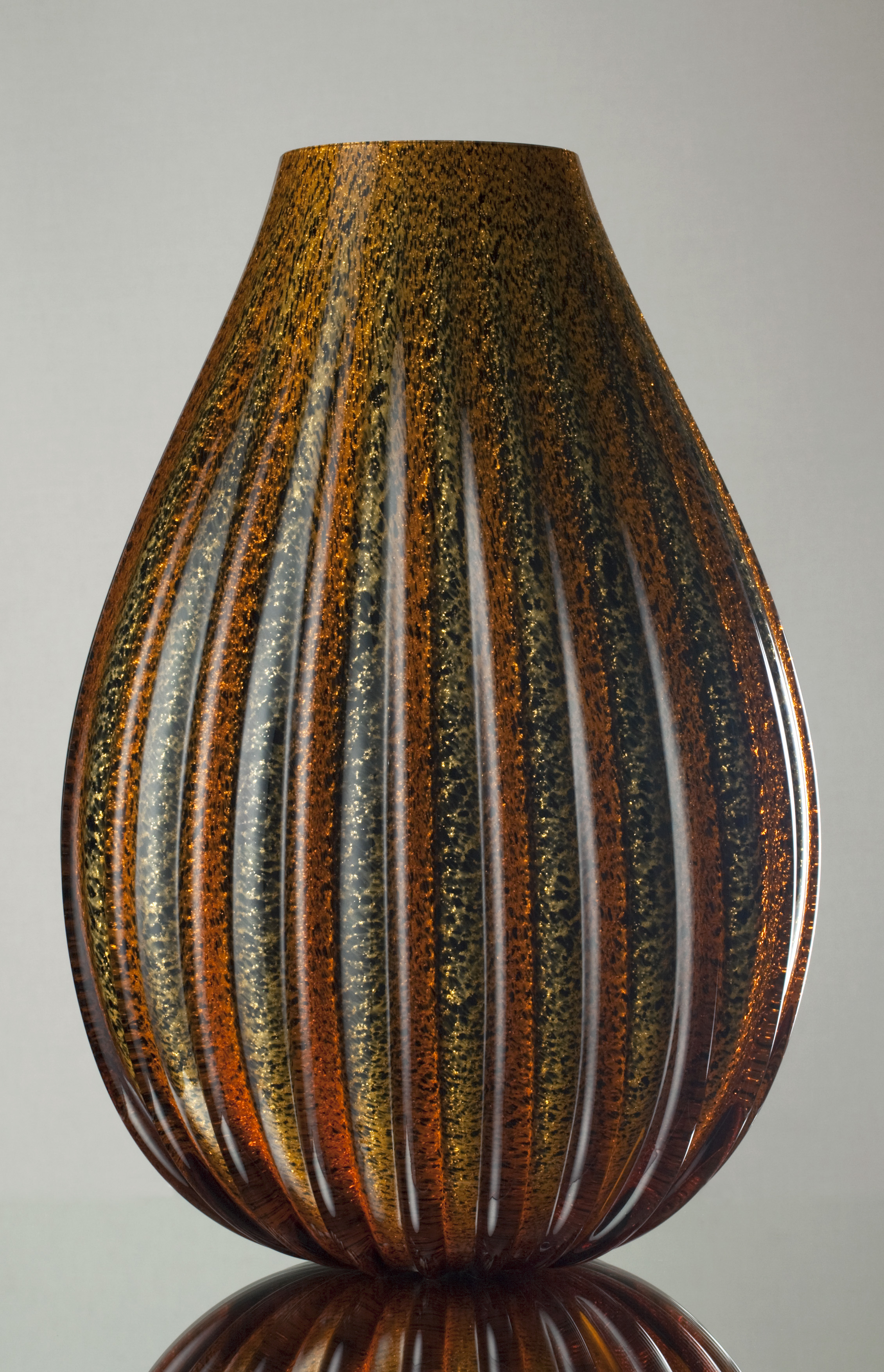
Gold Striped Vase – Jean Claude Novaro, France (1989). Image: Glenelly Glass Museum / Supplied
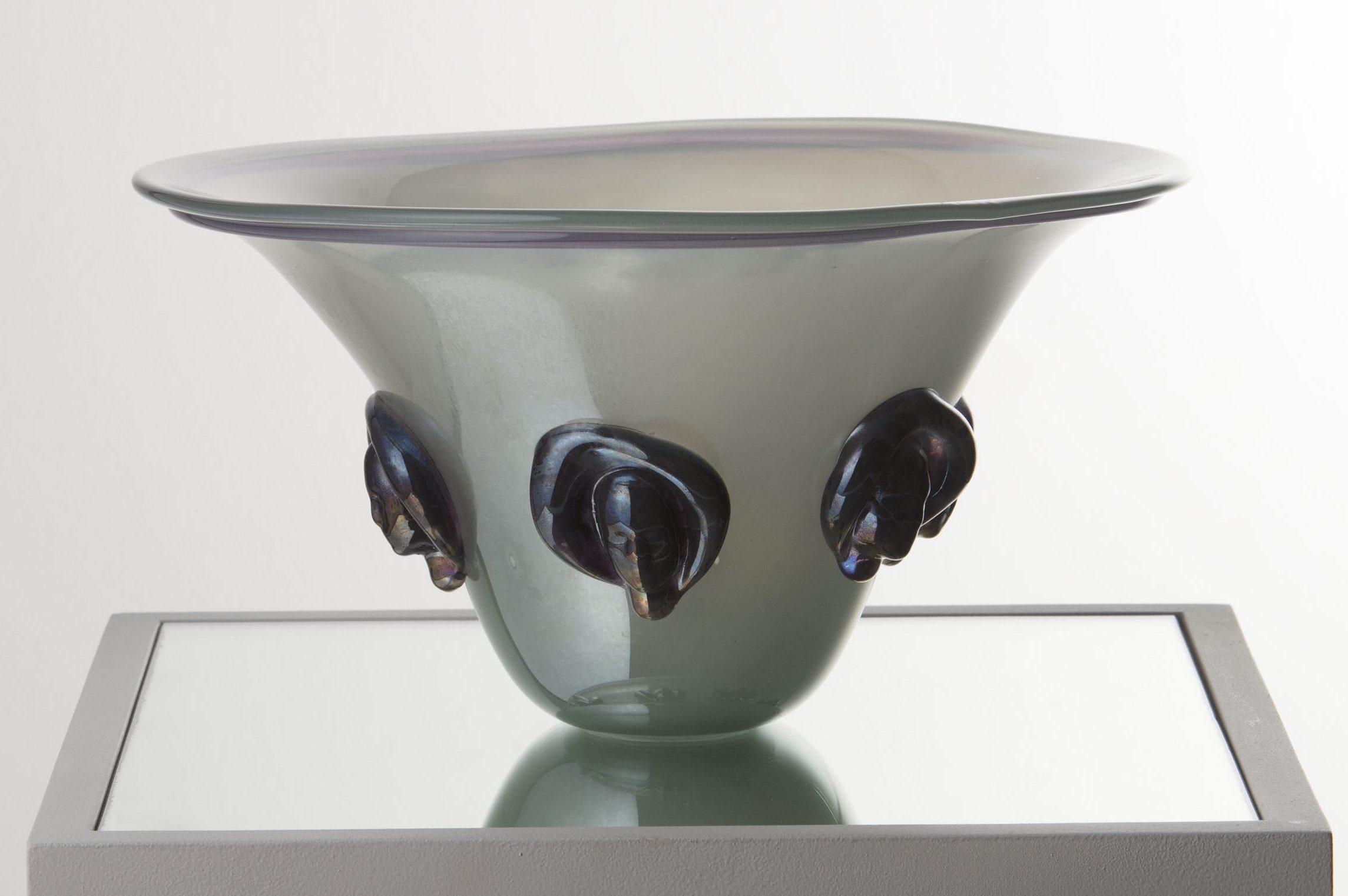
Iridescent glass bowl – Shirley Cloete, South Africa (1990). Image: Glenelly Glass Museum / Supplied
When Mme first saw Glenelly on a visit to South Africa in 2003, it was a fruit farm. Recognising its potential as a vineyard — scrubby soil, good elevation, perfect slopes — she replaced all the plum trees with vines and brought her many years of experience and skills to the property, just outside Stellenbosch in Ida’s Valley. It wasn’t long before her reds were winning renown and awards. (She also brought a touch of France to its new restaurant, Vine, which, headed by chef-patron Christophe Dehosse, offers another reason to visit the estate.)
“It takes a lifetime to get to know glass, and I am still learning.” – Lino Tagliapietra (88), master Murano-born glass blower.
But let’s go back a bit. After her marriage to the handsome Captain De Lencquesaing in 1948, the pair travelled extensively, their journeys fuelling her collecting passion. By the time she sold Château Pichon in 2007, her eclectic collection was substantial. Believing it was appropriate that those 700 lovingly amassed pieces remained in the Château as part of the sale, she kept just 10 of her favourite pieces … and began all over again!
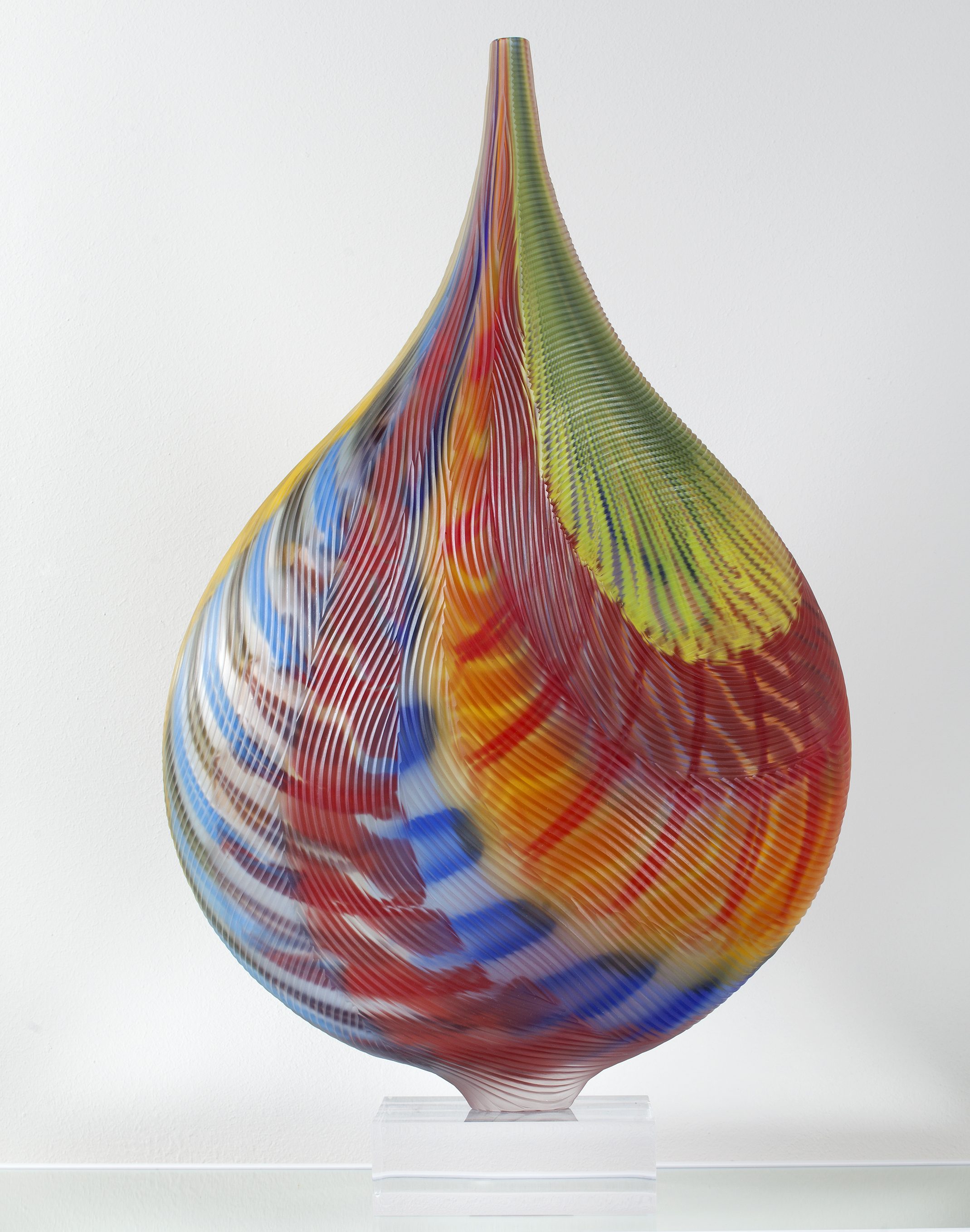
Maui – Lino Tagliapietra, Murano (2010). Image: Glenelly Glass Museum / Supplied
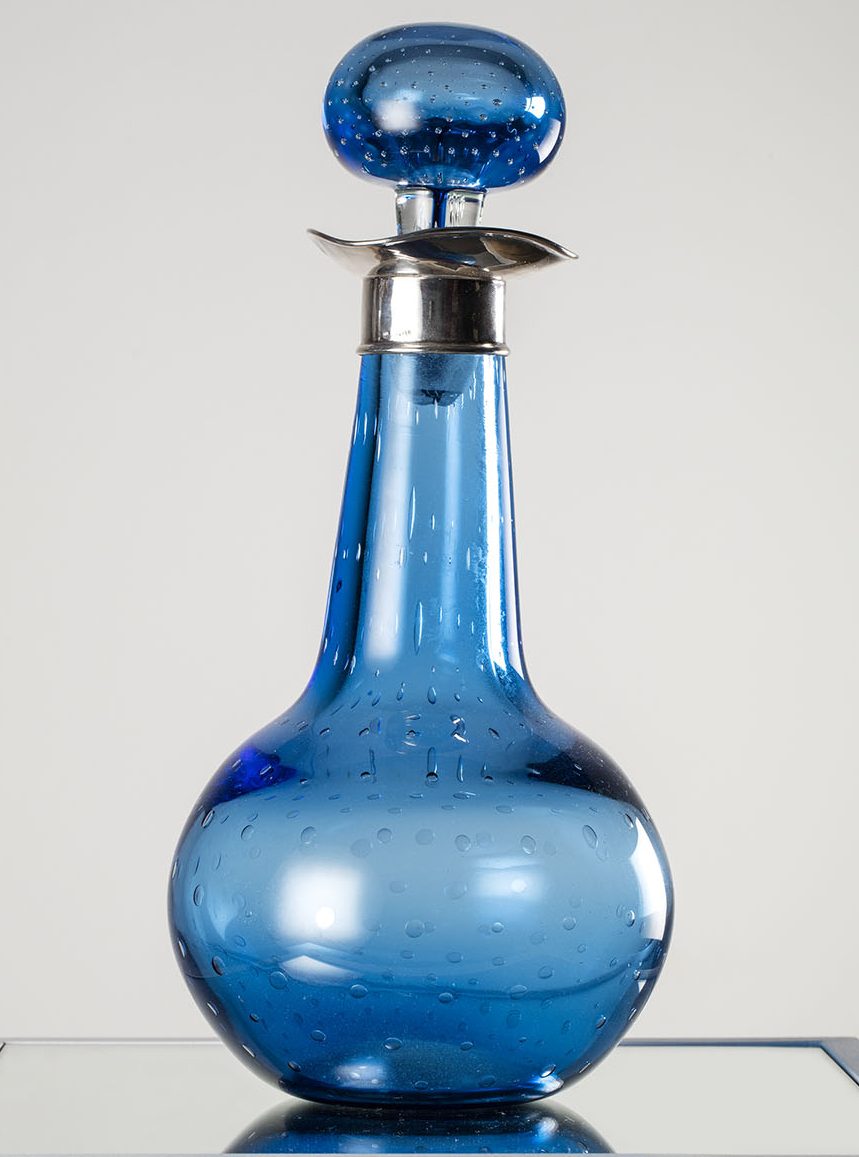
Silver- mounted blue and clear glass decanter with stopper – Shirley Cloete, South Africa (20th Century). Image: Glenelly Glass Museum / Supplied
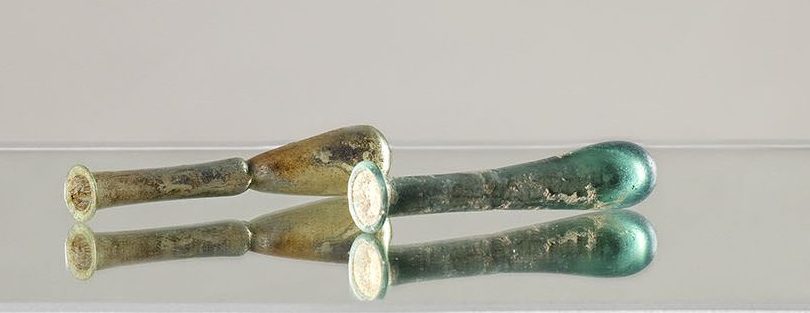
Tear Catchers – Unknown artist, France (1st Century AD). Image: Glenelly Glass Museum / Supplied
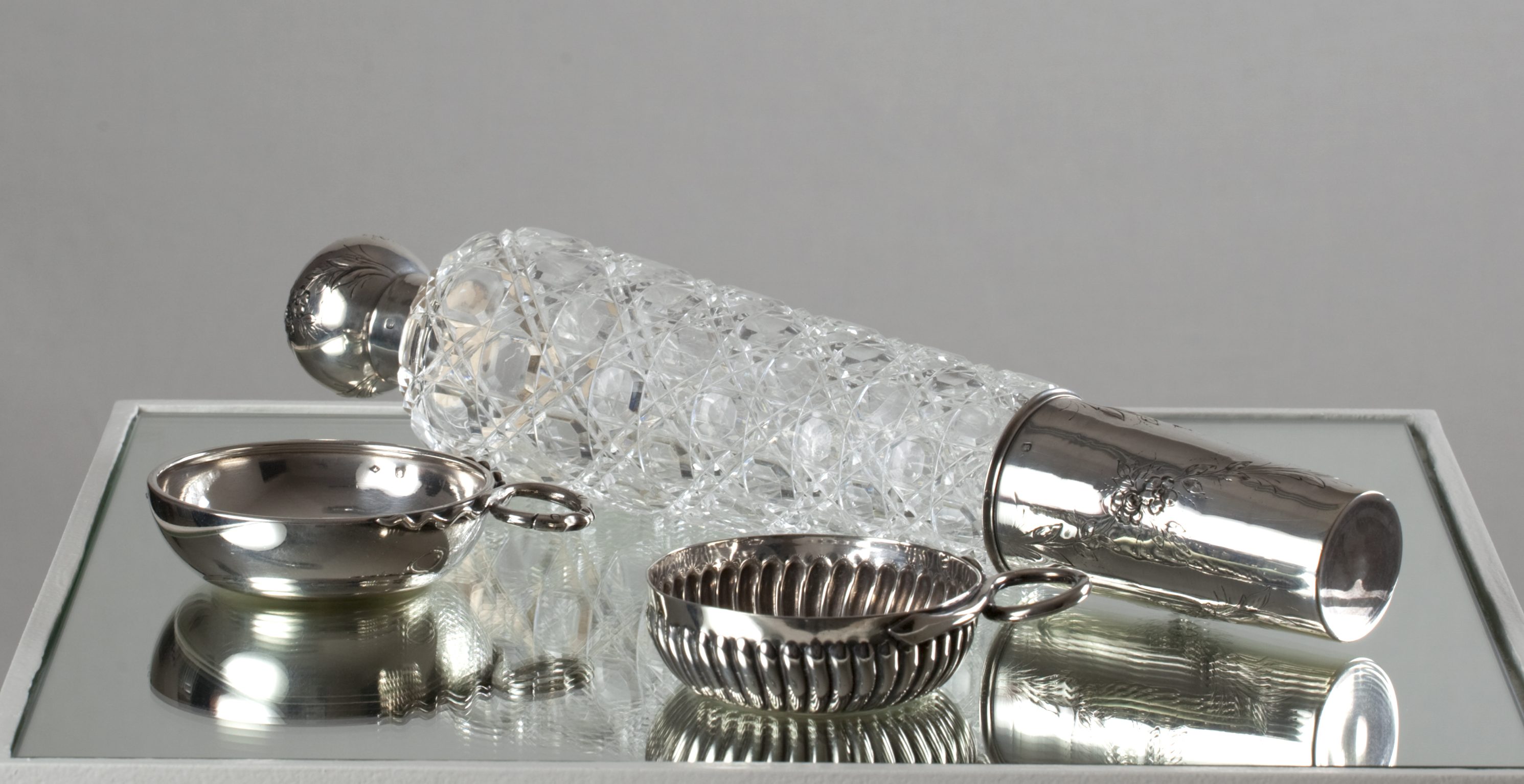
Crystal and silver schnaps flask, France, 18th Century – one of Mme’s 10 favourites that she saved from her first collection and brought to Glenelly. Image: Glenelly Glass Museum / Supplied
Her travels brought her into contact with the world’s great gallerists and glassblowers, many of whom she counts as friends. Gifts, purchases and serendipity have boosted this second collection, which now numbers some 500 pieces. It is beautifully housed (and lit) in a bespoke exhibition space in the winery. “The idea behind locating the collection in the Western Cape was to surprise our visitors with something they have probably never seen before, especially here in South Africa.”
The logistics of bringing pieces safely from sources throughout the world are challenging. Large pieces are entrusted to specialist packers with international experience in transporting super-fragile artworks. But, in celebration of each year’s grape harvest, Mme brings small acquisitions to Glenelly herself, piece by piece, in her luggage. (She holds her breath every time she unpacks her precious delicate cargo.)
The museum is a journey in itself, taking visitors through many eras and countries — from Afghanistan via Sweden to the US. The earliest known glass pieces were made in 3500 BCE; there are pieces here from 50BCE. There are 1st Century AD French ‘tear catchers’ and exquisitely wrought 14th century Chinese snuff bottles.
There is possibly no more elegantly developed art form. The pieces at Glenelly range from the sculpturally majestic to the quirky. Artists represented include venerated names such as Lino Tagliapietra, Jean-Claude Novaro (widely regarded as one of the world’s Master glassblowers), South Africans David Reade, Shirley Cloete and Liz Lacey, and famous houses Tiffany, Murano, Kosta Boda and Daum.
Astonishingly, there’s also a cabinet devoted to the almost-forgotten Woodstock Glass, a short-lived but well-regarded Cape Town producer (1879-1886) — the first in South Africa — of beautiful flasks, glasses and candlesticks.
Mme has a faultless memory in regard to her cherished collection: she knows the exact location of every piece in the four exhibition rooms.
Any favourites? She won’t be drawn (“It’s like choosing which is your favourite child — impossible!”) except to say that she believes all styles and periods justify their place in the museum, from fragile Roman pieces all the way to contemporary glass sculptures, including Art Nouveau and Art Deco designs.
Art in one form or another has played a key role in Mme’s family: her children, their spouses and grandchildren have all nurtured their own unique collections. Grandson Nicolas Bureau (CEO of Glenelly), for example, is an aficionado of 19th century bronzes; his brother Maxime is a serious collector of contemporary art. “My father was also very interested in the history of art and was a collector himself,” muses Mme. “When I think about it, it’s a passion. I think we have the art collector ‘bug’ in my family…”
Love, actually. DM/ ML
Entry to the Glass Museum is free, although donations are welcome, the proceeds going to the on-site Care Centre, where the children of the estate workers receive after-school care, supervised activities and hot meals.
A knowledgeable guide is on-site to take individuals and groups through the exhibition rooms — an experience not to be missed. Check the website for opening hours, restaurant bookings and the story of Glenelly.

















 Become an Insider
Become an Insider
What a delightful and informative article about an interesting lady, family and story. It is fascinating how history is collected by people who are willing to see the potential intrinsic value in things, in this case things of beauty, that can be shared with others in the future to tell a story of where we have all come from. Thank you